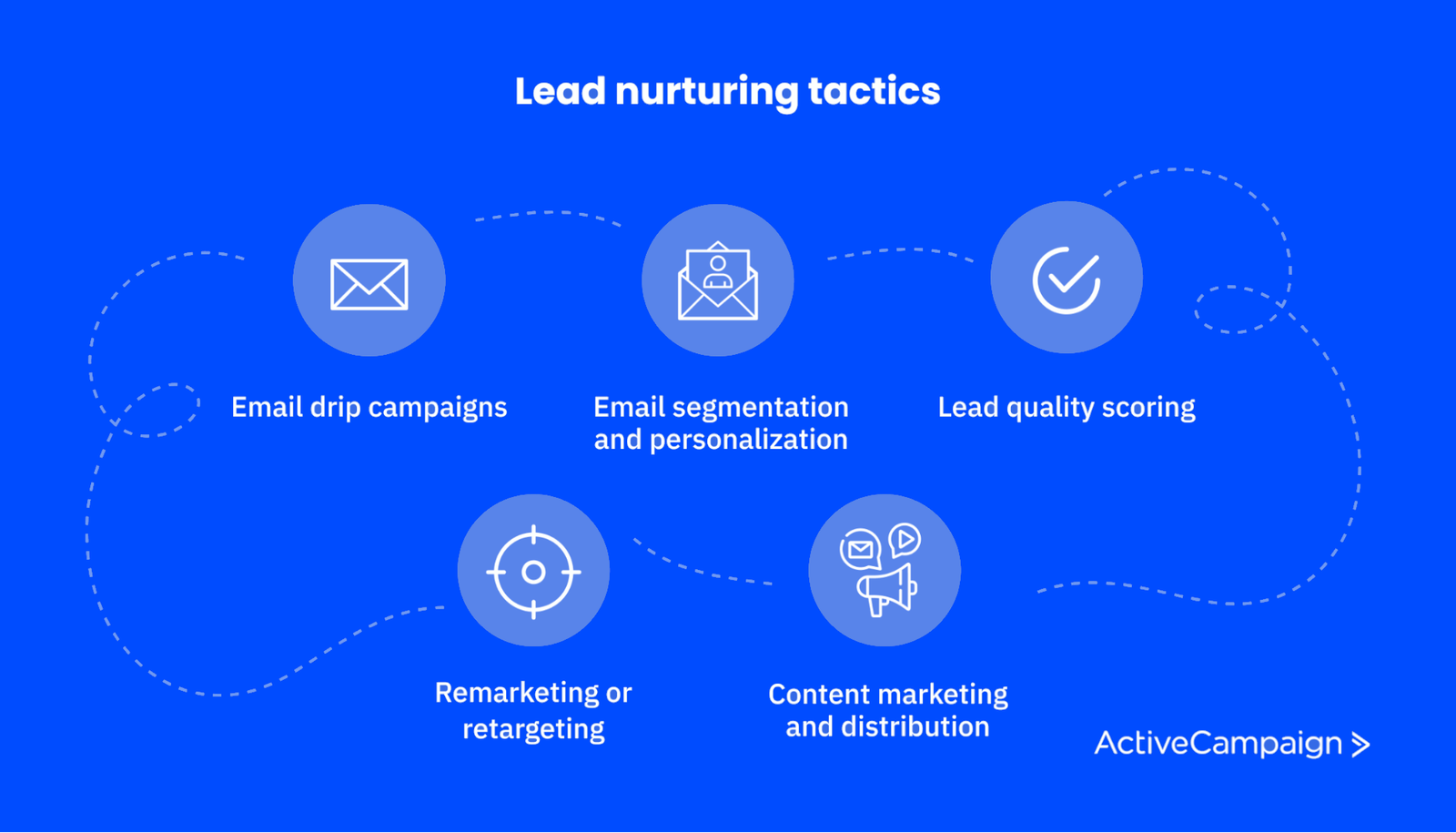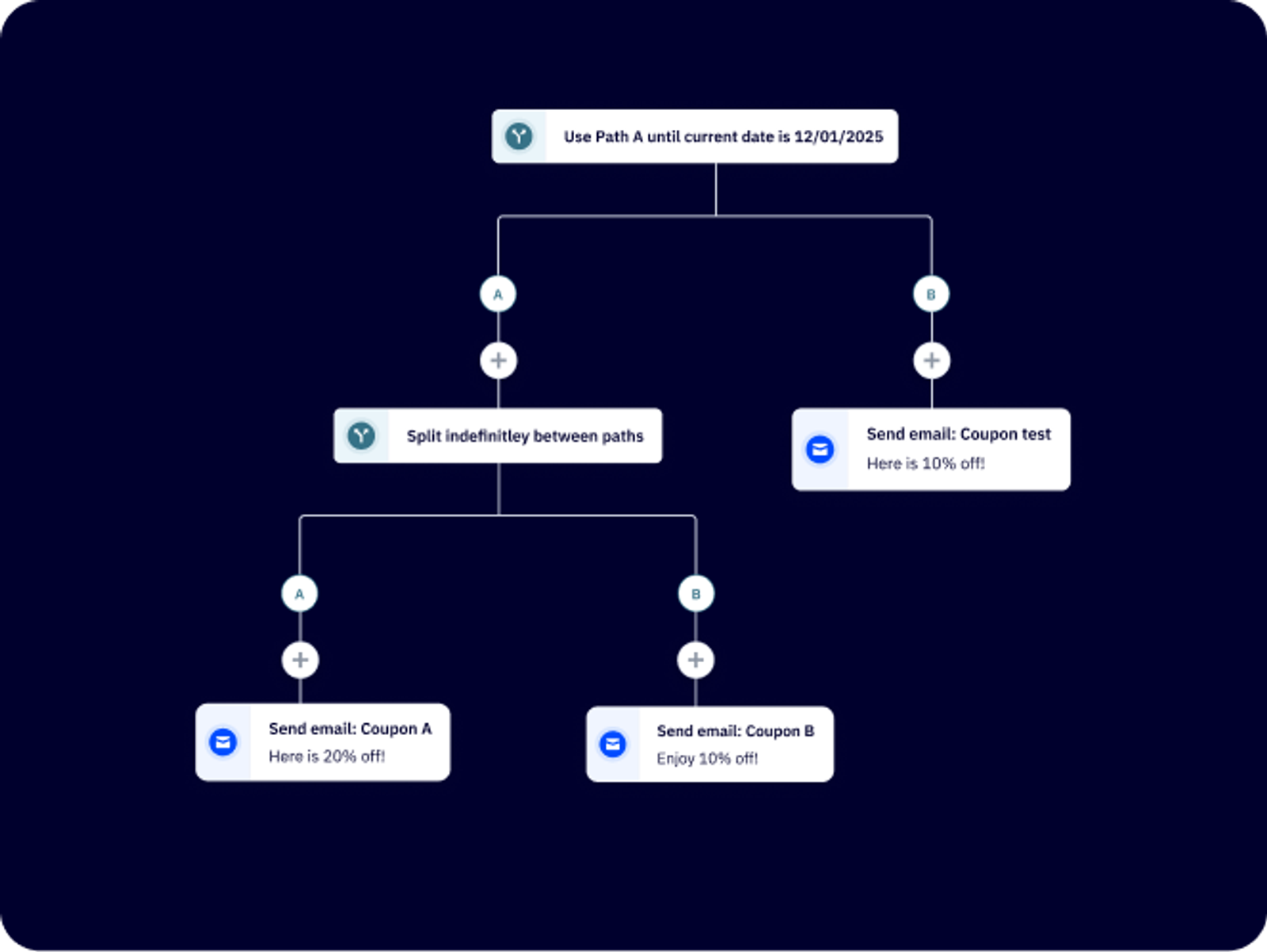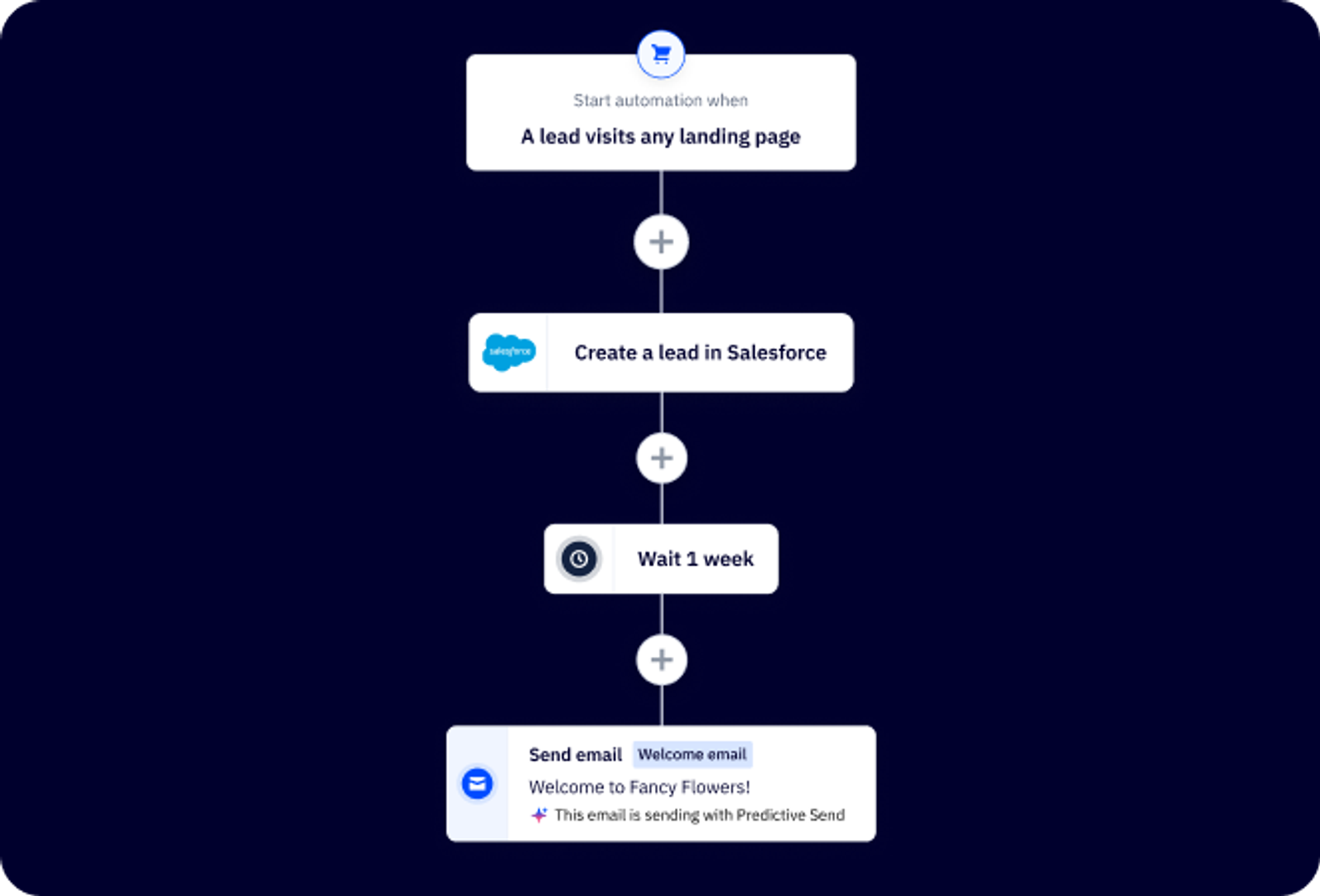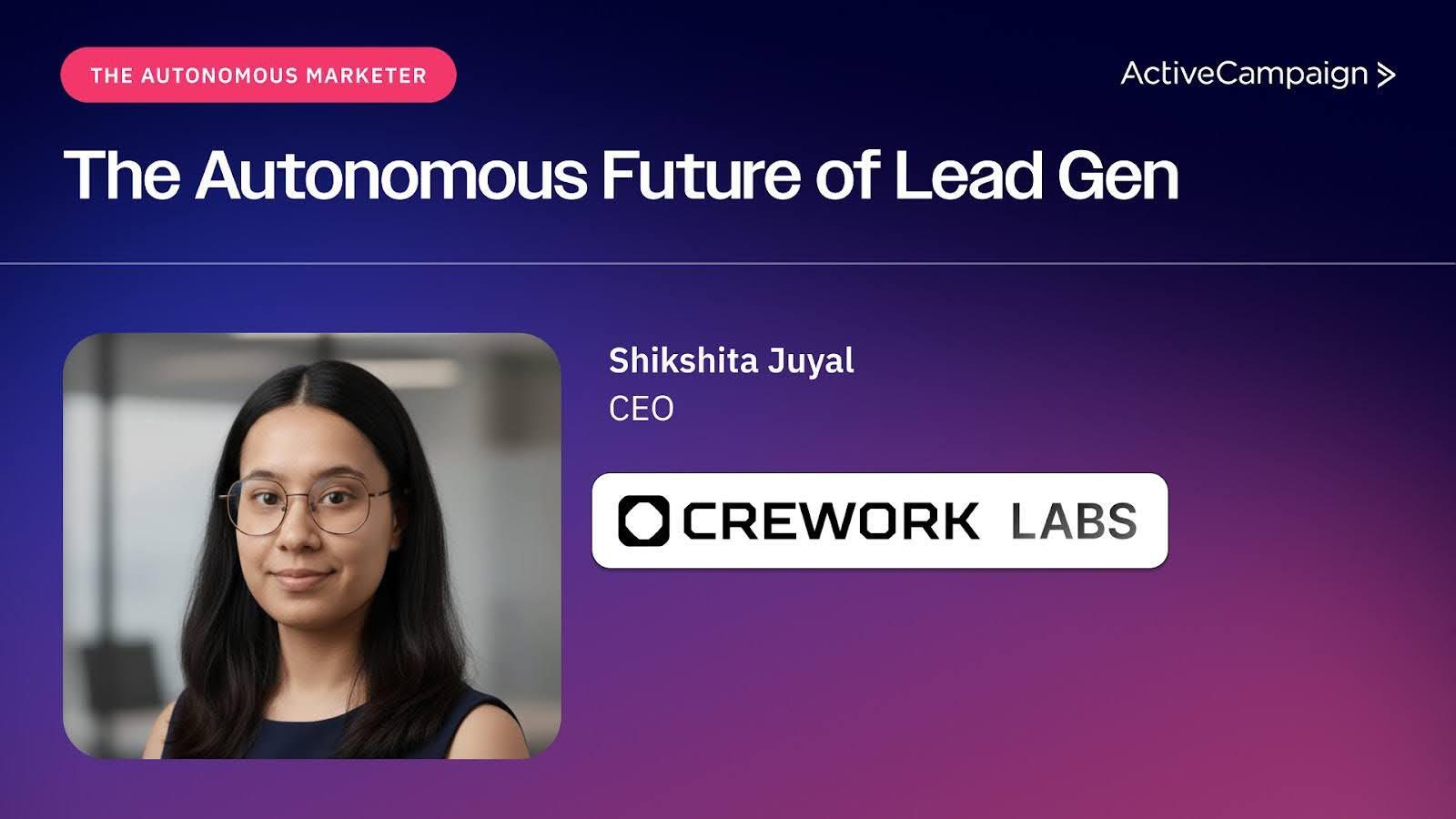Are you investing time, energy, and resources into generating leads but struggling to see bottom-line results? You're not alone. Many businesses focus so much on driving traffic and lead generation that they neglect the second half of the equation: turning those leads into customers.
By developing a lead nurturing campaign, you'll establish ways to cultivate deeper relationships with your leads. You'll also uncover their needs and wants and be able to craft a strategy that meets those needs, turning a lead into a sale.
In this article, we'll cover everything you need to know about lead nurturing. We'll talk about what lead nurturing is, the different types of lead nurturing, and how to create and measure a lead nurturing campaign.
What is lead nurturing?
Lead nurturing is the process of purposefully developing relationships with leads or contacts in order to move them down the sales funnel. Instead of waiting for them to decide on their own, businesses provide helpful and relevant content to keep them engaged. The goal? Build a connection over time so your company is top of mind when they are ready to buy.
Lead nurturing is strategic—it’s not just about sending random emails or following up sporadically. It takes into account who the potential buyer is (like their job title, industry, or role) and where they are in the decision-making process. By offering the right resources (such as ebooks, webinars, or case studies) at the right time, you can can create trust and loyalty long before a purchase happens.
You may already be using some lead nurturing tactics. These approaches can include:
- Email drip campaigns (check out the best email drip campaign software here)
- Email segmentation and personalization
- Remarketing or retargeting
- Lead quality scoring
- Content marketing strategy and distribution

An effective lead nurturing program will likely use a combination of these tactics as the lead moves through the sales funnel.
Why invest in lead nurturing?
Many potential customers show interest but aren’t immediately ready to buy. But that doesn’t mean they never will. Around 80% of these prospects will eventually buy from someone within two years. Your goal is to be top of mind when they are ready to buy.
That’s where lead nurturing comes in. By regularly engaging with potential buyers and answering their questions along the way, you can be sure they don’t lose opportunities. Nurturing also speeds up the buying process by providing valuable information that helps leads make informed decisions. Instead of leaving it up to chance, businesses guide prospects through the funnel, ensuring no opportunity slips through the cracks.
The importance of lead nurturing
Without a solid lead nurturing strategy, you risk losing leads that could have turned into paying customers. A well-nurtured lead is far more valuable than one that’s left to figure things out alone.
The process goes beyond just sending occasional follow-ups. Many companies use marketing automation tools to track lead activity, personalize content, and trigger responses based on buyer behavior. This ensures leads get the right information at the right time without overwhelming them.
Instead of treating potential customers like numbers in a database, it’s about educating, guiding, and providing value until they’re ready to make a confident purchase decision. When done right, it doesn’t just increase sales; it builds long-term trust and brand loyalty.
The best lead nurturing channels
Lead nurturing is all about meeting potential customers where they are and giving them the right information at the right time. Different people prefer different ways of engaging with brands, so using a mix of channels is the best way to keep leads interested and moving toward a purchase.
Here’s a breakdown of some of the best lead nurturing channels today:
Email: The lead nurturing MVP
Email is one of the most effective lead nurturing tools out there. It’s personal, scalable, and perfect for delivering targeted content based on where a lead is in the buying process.

As an example, an abandoned cart recovery email can help you keep leads warm.
Whether it’s an automated drip campaign, a personalized follow-up, or a newsletter with valuable insights, email marketing keeps prospects engaged without overwhelming them. The key is making emails feel relevant—nobody likes spam.
Social media: The ongoing conversation
Platforms like LinkedIn, Twitter, and Facebook allow brands to stay on a lead’s radar in a natural, low-pressure way. Sharing helpful content, interacting with comments, and engaging in industry discussions build credibility over time. LinkedIn, in particular, is great for B2B lead nurturing, while platforms like Instagram and TikTok can work well for B2C brands looking to connect with audiences visually.
Phone calls: The personal touch
A well-timed phone call can be the difference between a lead going cold and moving forward in the sales process. Calls work best for leads who have shown strong interest—think those who have downloaded an asset or attended a webinar. A quick chat to answer questions or provide additional insights can speed up decision-making and build trust.
Webinars: The deep dive
Webinars are one of the best ways to provide value while also showcasing expertise. They allow businesses to educate leads, answer live questions, and create a more interactive experience. Plus, they’re great for generating new leads while nurturing existing ones—recordings can be repurposed for on-demand viewing, continuing to provide value long after the live event. Make sure you're using a great webinar template, of course.
Content marketing: The silent seller
Blog posts, case studies, ebooks, and videos help nurture leads without direct sales pitches. Providing high-quality, useful content positions a brand as a go-to resource. This not only builds trust but also keeps leads engaged as they progress through the decision-making process.
Chatbots and live chat: The instant answer
Sometimes, leads need quick answers. Live chat and chatbots on a website allow businesses to engage with prospects in real time, providing instant solutions or directing them to the right resources. This is especially useful for website visitors who are actively researching but not quite ready to reach out to sales.
SMS and messaging apps: The quick check-in
Text messaging and apps like WhatsApp or Facebook Messenger offer a direct and personal way to connect.

They work well for reminders, follow-ups, and quick touchpoints—like letting a lead know about an upcoming webinar or sending a link to a resource they requested. Since most people check their phones constantly, this can be a great way to stay top of mind without being intrusive.
5 types of lead nurturing campaigns
A lead nurturing strategy can take many forms. It's imperative to choose the right approach to meet your business goals. There are a few common examples of lead nurturing campaigns you can use to reach your audience.
Welcome campaign
Once prospects have signed up for your email list, filled out a contact form, or otherwise expressed interest in your company, send a welcome email series that introduces them to your company and offers detailed information about your products.

A welcome automation in ActiveCampaign.
This series will form part of your top-of-funnel, which is excellent for familiarizing prospects with your brand and generating interest in your offers. 25% of marketers say that lead nurturing campaigns are one of the most effective top-of-funnel demand generation tactics.
Re-engagement campaign
Leads fall off at every stage of the sales cycle, but a re-engagement campaign can help get them back.

A re-engagement email from Grammarly.
To entice them, send new product information, your latest white paper, or a special deal to entice them back.
Product deep-dive campaign
When your lead is in the learning phase of the sales funnel, consider an informational campaign to educate them on every aspect of the product they're most interested in. Consider offering demos or meetings, too. This approach is wildly popular, with at least 68% of marketers using ultra-valuable content to nurture leads.
Multichannel campaign
Consumers don't spend their entire day in a single online space, so your sales team shouldn't either. Track customers across platforms and provide multiple touchpoints so that you're top-of-mind no matter where they are.
Promotional campaign
In the final consideration stages of the sales process, push to close the deal by offering special discounts, deals, and pricing.
There are plenty of other ways to approach a lead nurturing campaign. You can combine and adjust these tactics depending on your needs. Just remember to focus on meeting the needs of your leads at every stage of the buying process, whether they're just starting out in the awareness stage or approaching the buying stage.
7 steps to lead nurturing success
With so many ways to nurture leads, it can be difficult to understand where to start building your lead nurturing program. By following these steps, you'll create a framework for a lead nurturing strategy that turns more potential leads into sales.
1. Build buyer personas for common customer types
A buyer persona is a detailed, semi-fictional profile of your ideal customer. It’s based on real data—things like demographics, interests, challenges, and buying habits—so you can better understand who you’re trying to reach. Think of it as a roadmap that helps you speak directly to your audience’s needs rather than guessing what they care about.
A buyer persona includes key details like:
- Demographics (age, gender, job role)
- Location (where they live and work)
- Needs, wants, and pain points (what challenges they face)
- Habits and lifestyle (how they make decisions)
- Preferred online channels (where they engage with content)
By organizing what you know about your customers into clear personas, you can craft messaging and content that speaks directly to their needs. This helps you nurture leads in a way that feels personal and relevant.
Buyer personas are essential when it comes to lead nurturing. They guide how you tailor your messaging, choose your marketing channels, and deliver content at the right stage of the buying journey. Instead of sending generic emails or ads, you can provide relevant, valuable information that moves prospects closer to a purchase.
For example, a small business owner might need tips on scaling their operations, while a corporate executive may be more interested in ROI and efficiency. The more personalized your approach, the more effective your lead nurturing efforts will be.
2. Matching content to the buying journey
Not all prospects are at the same stage of the buying process. Some are just exploring, while others are comparing options or ready to make a decision. To nurture leads effectively, you need to know:
- What content applies to each stage (educational blogs for early research, case studies for consideration, demos for decision-making)
- What messaging resonates best (problem-solving insights vs. product-focused details)
- Who should be delivering the message (marketing, sales, or customer support)
A great way to refine this is to interview customers and people who didn’t buy from you. Understanding what worked—and what didn’t—helps fine-tune your approach.
How to nurture leads at each stage of the buyer journey
Lead nurturing is about delivering the right content at the right time. As prospects move through the funnel, their needs change. Here’s how to nurture leads effectively at each stage
Top of the funnel (TOFU)
At this stage, potential customers are just discovering your brand. They’re looking for informative, easy-to-digest content that helps answer common questions or solve a problem. The goal is to attract and educate without pushing a sale.
Best content for TOFU:
- Quick, engaging blog posts and articles
- Checklists and how-to guides
- Social media posts and short-form videos
Middle of the funnel (MOFU)
Now, leads are actively researching and comparing solutions. They may have signed up for your email list or downloaded a resource. The focus here is on providing in-depth, value-packed content that highlights what makes your brand stand out.
Best content for MOFU:
- Webinars and podcasts
- Whitepapers and research reports
- Free tools and product samples
- Email nurture sequences
- Longer-form blog posts
Bottom of the funnel (BOFU)
At this point, leads are close to making a purchase but may still need reassurance. Instead of rushing them into a sale, focus on building trust and reducing friction by showcasing real-world results and offering incentives.
Best content for BOFU:
- Case studies and testimonials
- Product comparisons
- Personalized demos
- Targeted discounts and offers
- Final-stage email nurture
3. Plan across channels
Leads don’t stick to just one platform—they move between email, social media, search engines, and websites throughout their day. That means your lead nurturing strategy needs to be just as flexible. Instead of relying on a single channel, take an omnichannel approach, ensuring your brand stays visible and engaging no matter where your leads are.
Start by identifying the top channels your audience prefers. For some businesses, this might be a mix of email, LinkedIn, and webinars, while for others, Instagram, SMS, and YouTube might be more effective. Once you know where your leads spend their time, tailor your messaging for each platform. This doesn’t mean reinventing the wheel for every channel. It means adapting your content to fit.
For example: An in-depth blog post could be repurposed into a short LinkedIn post, an Instagram carousel, or a bite-sized email tip. The core message stays the same, but the format and tone shift to match the platform.
4. Set up lead scoring
Lead scoring assigns point values to leads based on their actions so that marketing and sales teams can better serve them. In a lead nurturing strategy, lead scoring is important for assessing which leads are ready to close the deal and which need a little extra attention before buying.

Some teams use lead scoring to define a qualified lead, while others might use it to note the difference between a sales lead and a marketing lead.
When you’re setting up your lead scoring criteria, consider using the following:
- Email opens or click-through rate
- Website visits
- Length of time spent on the website
- Social media likes or shares
- White paper or e-book downloads
Your lead scoring criteria should depend on the strategy you use to nurture leads. And, you should adjust your lead scoring over time to best reflect the value of your prospects' choices. For instance, an e-book download might signal a more valuable lead than an email open. Your lead scoring should reflect that.
5. Get the right tools
For a full-scale lead nurturing campaign, it's smart to invest in a tool to automate parts of the customer experience. Using tools like a cloud contact center, help desk ticketing system, and customer retention software, you can scale up your lead generation and nurturing programs while still providing personalized, top-quality customer service.
Marketing automation software like ActiveCampaign is a huge asset to lead management and nurturing.
84% of marketers say AI and automation allow them to deliver real-time, personalized experiences to their customers. But, only 17% are using AI across their marketing efforts.
That means you have a chance to stand out and offer unparalleled customer experiences to your leads, crushing your competition.
6. Measure results
You'll need to tweak and optimize your lead nurturing strategy as you start to see results. It's crucial to establish a baseline for your lead-to-sale conversion rate. You can use existing data to calculate this over the last month, quarter, or year. Use this number to compare the difference in conversion before and after nurturing leads.
Then, choose key performance indicators (KPIs) that best show whether you've met your lead nurturing goals. Conversion rates will almost always be one of these KPIs, but you can also track sales, revenue, average revenue per user, customer engagement, and more.
Next, compare your growth over time. Remember that lead nurturing can be a long process, especially for B2B marketing teams. Be sure to allow for enough time to see the right results.
If you're just getting started with lead nurturing, you might also consider starting with a lead nurturing test group. Then, you can compare your nurtured leads to non-nurtured leads to see how effective your strategy is. No matter how you do it, measuring results is necessary to sustain your lead-nurturing success and optimize your results moving forward.
Automate Your Lead Nurturing
Lead nurturing best practices
We've covered a lot about lead nurturing, but we've got a few more tips to help you start on the right foot, no matter how you decide to use it.
1. Leverage A/B testing
Studies show that 79% of marketers use tests to compare the effectiveness of their message across channels, and you should, too. You can split-test dozens of elements of your lead nurturing campaign to hone in on exactly what gets potential customers to buy.

Split testing is made easy in marketing automation platforms like ActiveCampaign.
Learn more about split testing by reading our comprehensive A/B testing guide.
2. Personalize the little things
You can customize everything from the subject line to sending time when it comes to email campaigns. And if you're like most organizations, you'll find that your conversion rate rises when your level of personalization is effective.
3. Start small and scale up over time
Jumping headfirst into a company-wide lead nurturing strategy could do more harm than good.
If you take the wrong approach, you risk turning away more leads than you nurture. Instead, start with small marketing campaigns and groups of customers, and gradually expand your lead nurturing program as you learn more.
Frequently asked questions
There are a few questions you may have about lead nurturing.
What is the difference between cold, warm, and hot leads?
- Cold leads are those who unknowingly need what you have to offer but show no interest in your business. They're the people you'll need to educate about your products or services and convince them to purchase from you.
- Warm leads are those who show some interest in your business but haven't decided which business they want to purchase from—you or your competitors. Hence, you'll have to convince them you're the right choice.
- Hot leads are the people who are very interested in your product or service and often just need that final push to get to a purchase decision (by biting on a discount or special offer).
How long should a nurturing campaign be?
The timeframe of your nurture campaign will depend on the channel you're using and the prospects you're targeting (i.e., warm or cold leads).
It's recommended that your nurture campaign should be between 6 to 45 days long. However, your campaigns can be longer if you're trying to nurture your leads for a high-ticket (high-priced) offer in the near future.
How many emails should be in a nurturing campaign?
Your email nurturing campaign should consist of at least three emails. However, the number of emails you send will depend on your nurture campaign's timeframe.
For example, if your nurture campaign will run over four months, you can decide to send a nurture email once every two weeks with your preferred email marketing software.
If your nurture campaign is longer and you don't have the time to create 20+ emails, you could also choose to send between 1 to 10 nurture emails and then divert them to regular newsletter emails.
Using marketing automation to elevate your lead nurturing strategy
Marketing automation takes lead nurturing to the next level by making it smarter, faster, and more personalized. Instead of manually tracking every lead’s journey, automation ensures the right message reaches the right person at the right time.
Automated lead scoring helps prioritize the most engaged leads by assigning scores based on behaviors like email opens, page visits, or form submissions. Once a lead reaches a certain score, automation can trigger follow-up emails or notify sales reps to step in at the perfect moment.

Use marketing automation to follow up at just the right time.
With 250+ pre-built email templates in ActiveCampaign, you can set up automated drip campaigns in just a few clicks, keeping leads engaged with minimal effort.
Specific examples of lead nurturing emails you can automate include:
- Newsletters
- Discount codes after they visit a page
- Reminder emails
- Product updates
Plus, behavioral triggers—like downloading a resource or abandoning a cart—can instantly send personalized content that keeps the conversation going.
Automation doesn’t just save time, it makes lead nurturing more effective and scalable. By using the right tools to track engagement, personalize outreach, and automate follow-ups, you create an experience that naturally guides leads toward a purchase.
Nurture your leads into sales starting now
With buyer personas, customer data, and a lead nurturing tool in hand, you'll be ready to convert more leads than ever before, creating high-quality leads and perfecting the buyer journey.
Ready to get started and automate your lead nurturing efforts? Sign up for a free 14-day trial of ActiveCampaign.








